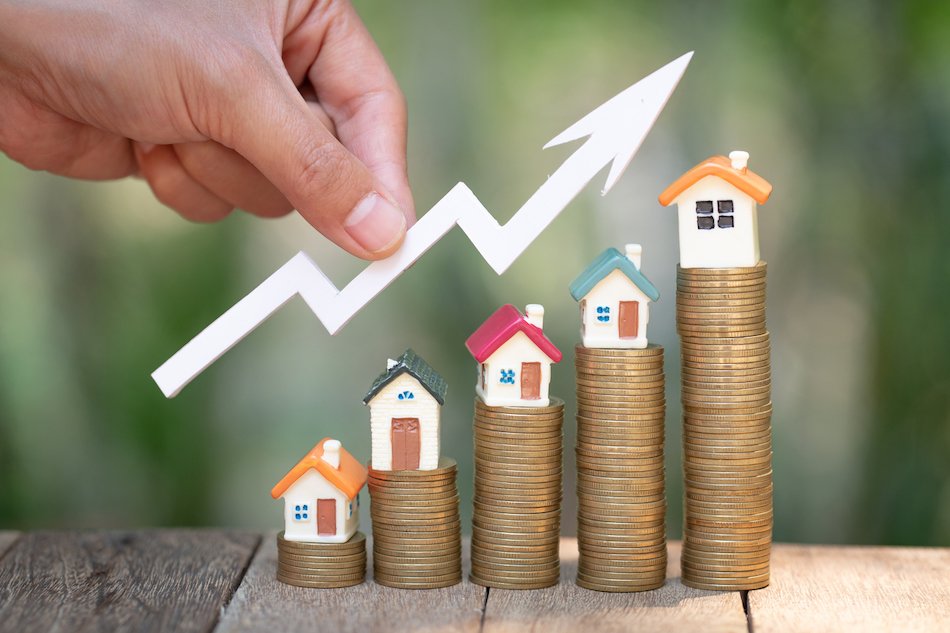
In the real estate business the words “price” and “value” are often used interchangeably. However, oftentimes there is a big difference between the two.
As billionaire investors Warren Buffet once said, “Price is what you pay. Value is what you get.”
In this article, we’ll discuss how real estate is valued, the difference between assessed and market value, and explain how to determine fair market value in real estate.
Key takeaways
- Two ways to value real estate are assessed value for tax purposes and market value.
- A tax assessor values property for the purposes of collecting enough tax to fund a municipality’s operating budget.
- A buyer and seller determine market value by coming to a meeting of the minds.
- Factors that may affect market value in real estate include location, property characteristics, and supply and demand.
- Three methods for determining real estate market value are the comparable sales, income capitalization, and replacement cost approaches.
What does real estate value mean?
In the real estate business there are 2 main types of value, assessed value for tax purposes and market value.
Assessed value
Counties and municipalities periodically assess the value of property to raise taxes to fund public services and works projects such as school and fire districts, and water treatment facilities.
A municipality begins by creating an operating budget, then assigns each property a tax assessed value to help fund the budget. To illustrate using a simple example, assume that a small city requires $100 million to fund the operating budget for the upcoming year.
If there are 50,000 parcels of real estate in the city – consisting of properties like single-family homes, condos, multifamily buildings, commercial properties, and land – each piece of real estate would be assessed with a sufficient value to be taxed an average of $2,000 per property.
In this way, the city is able to generate funds from property taxes to pay for its operating budget.
Market value
Market value in real estate – sometimes known as fair market value or FMV – is determined in a different way.
While a municipality is able to assess property values in such a way that the municipality gets the money it wants, real estate buyers and sellers must come to an agreement about what a property is worth and the price they are willing to accept.
A good way to think about real estate market value is that market value is the price a buyer is willing to accept and the price that a seller is willing to pay at a specific point in time.
To be sure, oftentimes there is a disconnect between what a seller thinks his or her property is worth, and what a buyer thinks it is worth. The two parties negotiate the sales price, along with other terms and conditions of the purchase and sale agreement, and eventually come to a meeting of the minds.
Market values in real estate can also change due to the overall demand for property at a given point in time. When the demand for real estate is strong and there are more buyers than there is property available, a market is characterized as a seller’s market. In a seller’s market, real estate market values generally rise.
A real estate market may also cycle in the opposite direction, sometimes reaching the point where there are more people trying to sell property than there are buyers. In a situation when there is more supply than there is demand, the market is characterized as a buyer’s market. In a buyer’s market, real estate market values generally decline.
Market value in real estate may also vary based on the type of property. For example, during the pandemic the demand for commercial property such as hotels and shopping centers decreased because people stayed home. At the same time, demand for single-family homes dramatically increased because many people looked for houses with additional space to work from home.
Factors affecting market value in real estate
There are a variety of factors that affect market value in real estate. Four of the main factors to consider are location, outside and inside appearance of a home, and supply and demand in the local real estate market.
Location
They say that real estate is all about location, location, location. Market value is affected by the characteristics of a neighborhood that a home is located in, such as school district quality and income levels.
External factors
Also known as curb appeal, external factors are those that create a first impression when a buyer or tenant walks up to the home. The style or elevation of the home, square footage, lot size, appearance of the front yard, how the neighboring properties look, and the general condition of home are some examples of external factors.
Internal factors
Television shows and real estate agents like to boast about a home having a “Wow!” factor. Things inside of a home that can affect value include the floor plan, number of bedrooms and bathrooms, age and quality of finishes, type and appearance of flooring, condition of the heating and cooling system, and energy efficiency.
Supply and demand
The supply and demand for housing at a given point in time also impacts market value in real estate. When there is more demand for housing than there is supply, home values and rent prices will increase. On the other hand, if demand for housing starts to decline, values may go down and landlords may have to offer tenants incentives and discounts to avoid extended periods of vacancy.

How to analyze real estate market value
There are a number of different methods real estate practitioners use to analyze real estate market value. As a rule of thumb, more than one valuation method is used, then the values are compared to one another to better determine the fair market value of a home.
Comparable sales
Also known as “comps,” the comparable sales approach analyzes recent sales of properties most similar to the home that is being sold or valued. The comparable sales approach generally follows these steps:
- Analyze subject property (property being valued) to determine characteristics like square footage of the home, construction date, number of bedrooms and bathrooms, lot size, and recent updating such as a new roof or heating and cooling system.
- Research property value estimates using online tools such as Zillow Zestimate or the Roofstock Cloudhouse Calculator to determine the valuation range and potential return of any single-family home in the U.S.
- Search for recent sales of homes with characteristics most similar to the one being sold. Most real estate agents will run comps for free in the hope of listing a property for sale or being paid a sales commission if they bring a ready, willing, and able buyer.
- Decide on the market value of a property based on the research conducted and recent comparable sales. A seller may wish to get a third-party opinion when valuing a property, such as speaking with a local property management company or paying for a professional appraisal.
Income capitalization approach
The income capitalization approach determines the market value of a rental property based on the current or net operating income (NOI) generated by using the cap rate formula:
- Cap rate = NOI/Property value
For example, assume that after conducting market research an investor determines that the market cap rate for a single family rental home is 7% in a specific real estate market. The rental home currently generates an annual rent of $14,000, has annual operating expenses (excluding any mortgage payment) are $5,600, for an NOI of $8,400.
The property value is calculated by rearranging the cap rate formula, and solving for the property value:
- Cap rate = NOI/Property value
- Property value = NOI/Cap rate
- $8,400 NOI/7% cap rate = $120,000 property market value
Replacement cost approach
The replacement cost approach is used to determine market value based on the current cost to construct a similar home, using today’s materials, design standards, and construction techniques.
According to recent research by Realtor.com, the median cost to construct a single-family home is $115 per square foot, excluding the value of the lot. If a home is 1,400 square feet in size, the home would have a market value of $161,000, based on the replacement cost approach.
Final thoughts
There are different ways to determine market value in real estate. But when everything is said and done, current fair market value is the price that a buyer and seller willingly agree to at a given point in time. Real estate market values can vary from one market and neighborhood to the next, due to factors such as supply and the demand from real estate investors and tenants looking for a place to rent.


